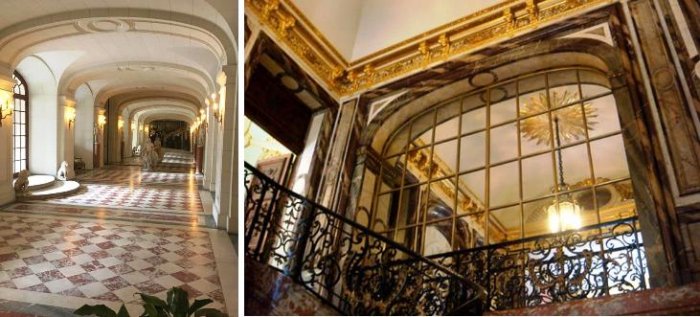Hôtel de Béhague – Romanian Embassy

©MP - Bienvenue en France
Formerly the palace of a Parisian muse during the Belle Epoque, now the Romanian Embassy.
At the invitation of H.E. Mr Luca Niculescu, the Romanian Ambassador, we had the opportunity to spend a morning exploring this Proust-era Parisian palace.
Built by Martine de Béhague, the heiress of considerable fortune who was briefly married to the Count of Béarn, the Hôtel de Béhague palace was a gathering place for the highly cultivated and sophisticated in the early 20th century.
Martine de Béhague invited painters, sculptors, musicians and writers to the palaca, even employing Paul Valéry as her librarian, with whom she developed a lasting friendship.
A lover of the visual arts, she spent her life collecting works of great artists, including Watteau, Tiepolo, Fragonard or Titian, while she also proudly displayed the works of contemporary artists in her reception rooms.
A large piece by Boucher still hangs in the Versailles-inspired dining room.
Martine de Béhague sailed the seas on her yacht, and also provided for those in need. During the First World War, the flag of the Red Cross flew above the palace.
She granted a number of illustrations by Leonardo da Vinci to the Louvre as well as the frame in which hangs the Mona Lisa.
She was also a musician and organist.
A life-long Wagner enthusiast, she often held performances for audiences of a few hundred in the palace’s Byzantine theatre. Surrounded by its porphyry columns and Byzantine mosaics on gold backgrounds, spectators enjoyed Bizet’s Carmen, Faure’s Requiem conducted by the composer himself, and American dancer Isadora Duncan causing a sensation by dancing barefoot.
When Martine de Béhague died in 1939, the Romanian government bought the Hôtel de Béhague, and it has been the residence of the Romanian ambassador ever since.
By Nicole Tordjman - Treasures of French Heritage


